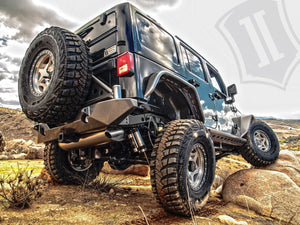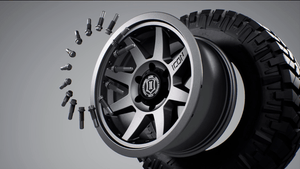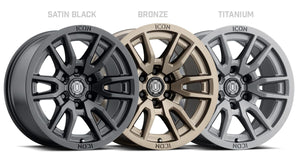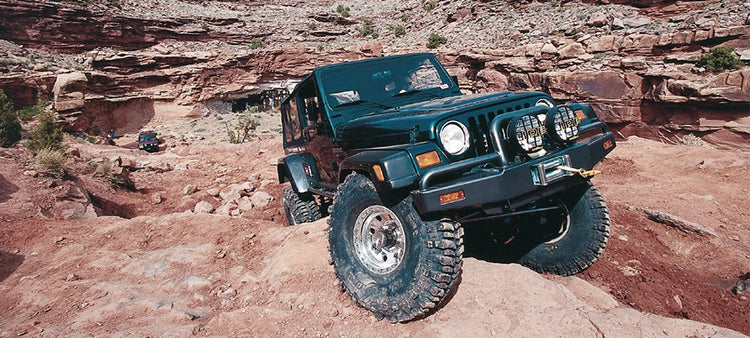
New Gear Break-In
Do we really need to break in a new gear set? I have heard many people say “When I bought my new truck, no one ever told me to break in the ring & pinion.” Whenever we are blessed enough to afford a new vehicle, we take it easy on the engine for the first few hundred miles. While we are pampering the engine (probably for the last time ever), the ring & pinion set goes along for the ride and gets a chance to break in before we hammer the throttle. In most stock vehicles with stock tires there is seldom a risk of a burned gear set. For those of us who modify and use our trucks, there many situations that can contribute to burned gear syndrome. Motorhomes, towing, tall tires, and high numeric gear ratios (4.56 & up) can all generate a lot of heat and cause the gear oil to break down. The greatest damage to a new gear set results from running for ten minutes or more during the first 500 miles when the oil is very hot. Any heavy use or overloading while the oil is extremely hot will cause it to break down and allow irreversible damage to the ring & pinion. In order to make them run cooler and quieter, new gears are lapped at the factory. However, they are not lapped under the same pressures that driving creates. The loads generated while driving force any microscopic high spots on the gear teeth back into the surface of the metal. This is called “work hardening”. Work hardening is similar to forging in the way that it compresses the metal molecules into a very compact and hard formation. This can only be accomplished if the metal surfaces are lubricated and the gear temperature stays cool enough that the molecular structure does not change. If the temperature of the metal gets hot enough to change the molecular structure, it will soften the surface instead of hardening it. This may seen like a balancing act, but it all happens easily and passively as long as the oil keeps the gear cool while it is breaking in. Some of the synthetic oils on the market today can help a gear set live longer. I’ve had great success with Red Line ®, Torco ®, and Richmond Gear ® synthetic gear oils. These oils will continue to lubricate at temperatures where many crude oils break down. Even with synthetic oils, I still recommend the following procedure for breaking in a new gear set: After driving the first 15 to 20 miles, stop and let the differential cool before proceeding. Keep the vehicle at speeds below 60 mph for the first 100 miles. I also recommend putting at least 500 miles on the new gear set before heavy use or towing. During the first 45 miles of towing, it helps to go about 15 miles at a time before stopping to let the differential cool for 15 minutes before continuing. This is necessary because not all of the gear tooth is making contact until it is heavily loaded. When towing, the teeth flex to contact completely, and cause the previously unloaded portion of the teeth to touch and work harden. It is very easy to damage the ring & pinion by overloading before the teeth are broken-in. If you take it easy on a new ring & pinion and keep it full of high quality oil, it will last a lot longer. With regards to limited slip additives, I have found that using too much additive can lead to premature gear wear. Use just enough to keep the limited slip from chattering but not more than 4 oz for every 2 qts of oil. It is a good idea to change the gear oil after the first 500 miles in order to remove any metal particles or phosphorus coating that has come from the new gear set. This is cheap insurance and a good time to discover any problems before they grow too big.
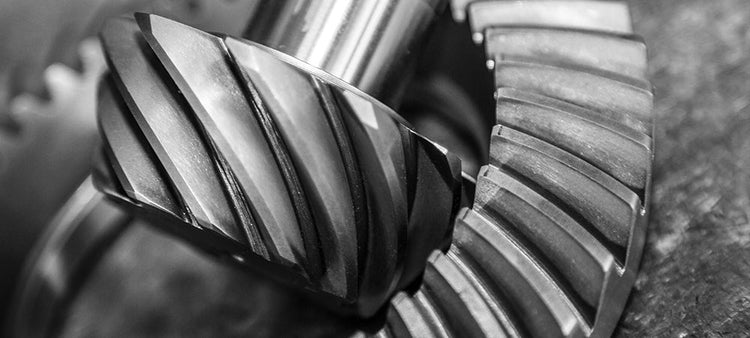
Grinding Gears
Many people would rather have their children genetically altered before they would grind gear teeth. Gears are not handed to us by God. They are designed by people who have figured out how to form steel into shapes that can be used to multiply torque and change power-shaft directions. Although some of us hold gears in very high esteem, they are not sacred. They can be ground on a surprising amount with little or no loss of strength. As long as the gears do not become hot (over 600 degrees) from the grinding, the molecular structure will remain the same and the hardness of the gear-set will not change. There are many situations where grinding gear teeth is not only OK, but can be helpful. Some of these include, but are not limited to: grinding to clear the cross-pin shaft, removing nicks from shipping with poor packing, rounding the corners on chips from a brittle surface, trimming the ring gear toe to clear 9″ Ford pilot bearing, chamfering the toe of the pinion teeth to clear the carrier case, smoothing high spots due to machining, or back-cutting race gears to allow for tooth bending. The drive side of the gear-set takes much more load than the coast side does and therefore it is a good idea to have a little restraint and think ahead before getting carried away on the drive side of a gear tooth. On the other hand, the coast side of the tooth gets loaded very little and not very often so it can take a huge amount of grinding with no negative side effects. Although I have seen vehicle run with half of a ring gear or pinion tooth missing, I do NOT recommend pushing your luck that far. However, I have no problem running a gear-set in my own vehicle with 1/4 of tooth ground off of the toe of one or two ring gear or pinion teeth. If the same 1/4 of the tooth was removed from the heel, I would be wary. I would not recommend removing more than about a 1/5 of the tooth from the heel of ring gear, because most of the load is from the center of the tooth to the heel when under load. And, it is the heel of the tooth that receives the hardest load. The pinion is another thing entirely. The last 1/4″ to 3/8″ of the pinion gear teeth do not even come close to touching the ring gear teeth on the drive side and therefore the tip can be removed entirely if the tooth or teeth are chipped, dinged, or damaged in any way. This heel portion of the pinion teeth often gets damaged in production or shipping and bothers people who are unfamiliar with rear end gears. If any part of the tooth does not contact other teeth, it can be removed without strength problems. In order to improve my confidence when attacking a new gear set, I often practice on an old gear set right before I approach the new set. This helps me pick the right cutting tool, set the angle of attack, and find the best cutter speed before I begin. The main thing to remember when grinding gears is to make sure that all corners are chamfered and there are no sharp edges to cut into the other teeth.
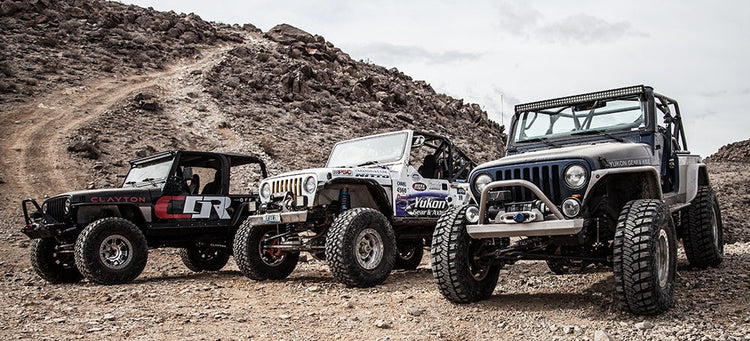
Worms Can Help Off-Road Traction
Even though the Gleason Torsen limited slip differential has been out of production for about thirteen years now, I still get quite a few questions about it. The Gleason Torsen was a gear driven, torque-sensing limited slip differential that was very smooth and reliable, as long as it was not used with tall tires. Although Gleason decided it was too difficult to make a strong yet economical unit, Tractech (maker of the Detroit Locker and EZ Locker) has been able to develop their own line of torque-sensing limited slips they call the Detroit TrueTrac. Detroit TrueTracs are similar in design to the Gleason Torsen , only the TrueTracs hold up well with reasonably tall tires. They use worm wheel gears that work on the same principle as a worm gear. When the unit is loaded, the worm wheels are forced away from each other and against the case. They develop locking torque by the light friction between the worm wheels and the case. This light friction is multiplied by the ratio of the worm wheel, which depends on the size of the worm wheel relative to the size of the side gear. The amount of torque biasing or lockup can be changed by the manufacturer by simply changing the diameter of the gears, or the pitch and spiral of the teeth. A larger difference in the size for the worm wheels and side gears (smaller worm wheels and larger side gears) will increase the lockup force. Increasing the pitch and spiral of the teeth will also increase the lockup forces. Like everything, there is a limit as to how much lockup force is reasonable. Making the unit too “aggressive” will cause tire scrub during everyday driving and will cause the unit to wear out too quickly. All of the feedback that I have received from customers indicates that the unit works very well for mud and snow, while going unnoticed during every day driving. When used in situations like rocky trails where one wheel gets off the ground, the unit will not lock up 100%. Light application of the brakes will help the differential engage more transferring power to the tire that is still on the ground. For extreme situations where the vehicle will have one wheel in the air often a locking differential provides better power transfer to the wheel on the ground. Detroit TrueTracs are designed for medium duty 2WD and 4WD applications. They work well in the front and rear, and are so smooth that there is no hint of resistance in the steering wheel when used in front drive steering axles. Like the Gleason Torsen , the Detroit TrueTrack does not bang and clunk, has no clutch chatter, does not wear out like clutch type positractions, does not need limited slip additive, and needs no preload or clearance adjustments. Sounds too good to be true? The only drawbacks to the TrueTracs are limited applications and their inability to lockup 100% like a locking differential can. Although Gleason no longer makes the Torsen differential, the Detroit TrueTrac is a proven design that is available for many popular applications.
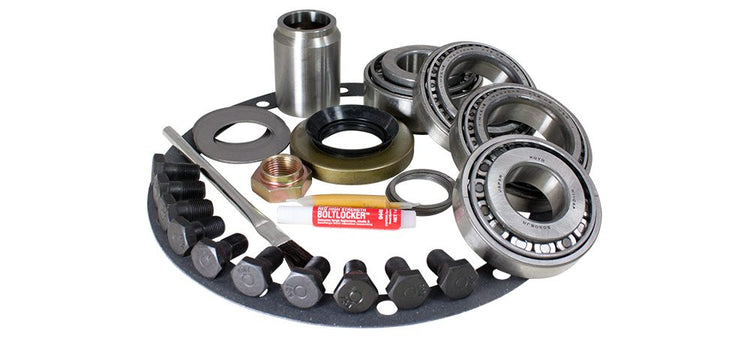
What Does “Complete” Really Mean?
Have you ever had to call around town on a Friday to find pinion shims or a crush sleeve so you could be on the trail for the weekend? Working on a rear end is hard enough with the right parts, and can be downright impossible with the wrong parts. A good installation kit can make the job a lot easier and save hours of frustration. Every distributor claims to have the best installation kits available. I have seen a number of items labeled “Installation Kit” or “Master Kit” that didn’t deserve to be named as such. Since there is really no established standard, the terms will always be used loosely and it is up to the customer to put the sales person through the drill of explaining what is in each kit, in detail. There are many good questions to ask when ordering. Does the kit include good instructions? Does it include ALL of parts necessary to rebuild or setup the rear end completely? Are both pinion and carrier bearings included in the kit, and are they the highest quality available? Many kits use cheap import bearings and seals. If the salesperson is not certain what kind of parts their kit uses, ask them to open the box and see. Many kits do not include useful carrier and pinion shims. This is due to the cost of making good shims. Are there just enough shims for one adjustment, or does the kit contain enough shims to setup the rear end from scratch? In my opinion, a complete “Installation Kit” includes: both pinion and carrier bearings, a crush sleeve or preload shims, enough pinion depth shims to set the depth without having to reuse any of the original shims. For most applications, a complete set of carrier shims. A high quality pinion seal, an OEM quality pinion nut, a gasket or silicone for the cover, Loctite® or thread locker for the ring gear bolts and pinion nut, an instruction manual with pattern diagrams and details that really help, and real gear marking compound. (If you are looking for gear marking compound in a handy tube, try GM part number 1052351.) It really doesn’t matter which parts a supplier includes in their installation kit, as long as they explain, in detail, what the kit contains. There are many high quality kits out there. Ask a lot of questions and don’t take “I’m not sure” for an answer. Remember, this is your rear end we are talking about.
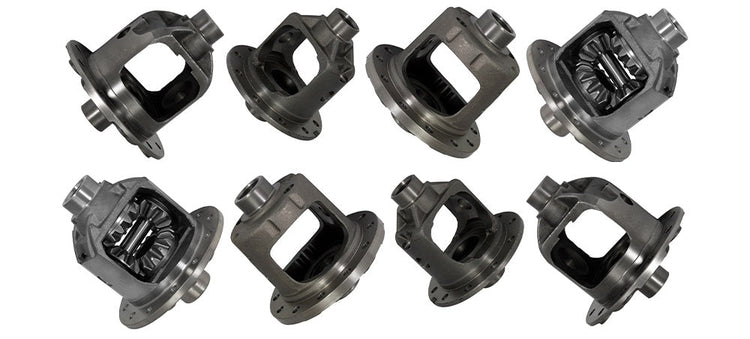
Do I Really Need To Buy Another Carrier?
When changing the gear ratio for more power or more speed, sometimes a new ratio requires a different height carrier case. Carrier height changes are commonly referred to as a “carrier break”, although this doesn’t have anything to do with broken parts. What it does refer to is the difference in the ring gear mounting height on the carrier case itself or a breaking point from one height to another. When the gear ratio is changed, it is accomplished by changing the number of the ring gear teeth and / or the pinion gear teeth. The gear ratio is determined by dividing the number of teeth on the ring gear by the number of teeth on the pinion gear. For example, 41 divided by 10, which equals 4.10 for a gear set with 41 ring gear teeth and 10 pinion teeth. As the ratio increases numerically, the ring gear usually stays the same diameter which requires that the pinion gear diameter gets smaller. The smaller pinion gear will not reach the ring gear unless the ring gear is made thicker or the carrier case mounting flange is moved closer to the smaller pinion gear. The ring gear material is very expensive and it is far cheaper (especially when building millions of rear ends for production) to change the position of the carrier flange. Changing the flange height usually requires very little or no extra material on the carrier case. An example of a popular rear end that has a carrier break is the Dana Spicer model 44. The D44 uses two different height carriers. When using ratios that are 3.73 or numerically lower (such as 3.54 or 3.07) a short carrier case is used to allow the large pinion gear to fit in the housing and move the carrier flange far enough away for the ring gear to have thickness left to support teeth. When using ratios that are 3.92 or numerically higher (4.09 all the way to 5.89), a taller carrier case is used to move the ring gear closer to the small pinion, without having to use an excess of expensive ring gear material. In order to avoid the expense of a new carrier case, some people use ring gear spacers. A spacer is a quick fix, but from my experience, not a good idea. If the spacer pushes the ring gear up off of the pilot surface that centers it on the carrier, it will have to rely on the ring gear bolts to hold it centered. The ring gear bolts are neither strong enough or accurate enough to center the ring gear correctly. This in turn causes the ring gear to “walk” around on the carrier and the tooth contact will suffer. Before you know it, the gear set will be noisy, wear out, orbreak. I have seen a very few cases where the ring gear pilot surface on the carrier is large enough that it could still touch the ring gear when using a spacer. This is somewhat better than no contact, but the bolts will still be overloaded and the unit will not last. If your ratio change calls for a different height carrier case,there are a few options that will work just fine. Thick ring gear ring & pinion sets are available for many popular applications. The thicker gears have absolutely no side effects. The thicker ring gear has lots of material exposed to the oil so it runs just as cool as a thin gear set. Not only has the aftermarket used thick ring gear sets for many years, many original equipment vehicles have used thick ring gear sets or offered thick gear set options. For example, Ford does not use any carrier breaks on any of their corporate rear ends which means that many of their gear sets could be considered “thick”. The other option that will solve the problem of dealing with a carrier break is the obvious. Buy a new carrier. This may sound expensive and in some cases it is. In many cases the carrier case is less than $100. Or, it may be a good time to upgrade to a positraction or locker. Replacing the carrier with a posi or locker allows you to upgrade and get the appropriate carrier at the same time. Next month will include a list of carrier brakes for popular truck, passenger car, and Jeep rear ends.


